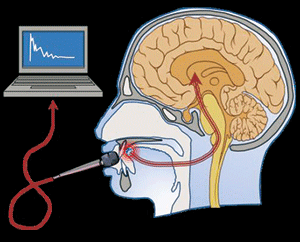Acoustic technology aids sensory science; Plasma treatment extends product shelf life
CUTTING EDGE TECHNOLOGY
Acoustic technology aids sensory science
NIZO Food Research, Ede, The Netherlands, has pioneered a new technology called acoustic tribology that can determine the creaminess or astringency of foods. Acoustic tribology measures the sound generated by the food interacting with the tongue during chewing and consumption. The technology records and analyzes the sound of rubbing of the tongue against the food. It can be used to predict the sensory effects of food innovations.
The formulation for low-fat or low-carb products presents significant challenges related to mouthfeel for product developers. Until now, standard rheology measurements are used to determine viscosity. More relevant is the way a product changes friction of surfaces, and for this reason tribology is often attempted. However, the plastic or stainless steel surfaces used in tribometers cannot sufficiently mimic the soft, mucous-coated papillary surface of a human tongue.
 Acoustic tribology evaluates the sound generated by rubbing or tapping of the tongue in the mouth during mastication. The inventor, George van Aken, explains that the sound produced by rubbing or tapping is caused by the same vibrations of the tissue that are sensed by the mechanoreceptors in the tongue that signal the sensation of roughness, stickiness, and structural coarseness of any food (fluid, semi-solid, and solid). The technology is non-invasive, measures in real-time, and can be applied directly on human subjects without any preconditioning or preparation of the body surfaces.
Acoustic tribology evaluates the sound generated by rubbing or tapping of the tongue in the mouth during mastication. The inventor, George van Aken, explains that the sound produced by rubbing or tapping is caused by the same vibrations of the tissue that are sensed by the mechanoreceptors in the tongue that signal the sensation of roughness, stickiness, and structural coarseness of any food (fluid, semi-solid, and solid). The technology is non-invasive, measures in real-time, and can be applied directly on human subjects without any preconditioning or preparation of the body surfaces.
“The advantage of acoustic tribology is that we measure where the consumer experiences the food: in the mouth,” said van Aken. “It gives objective information about the suppleness of movements and thus the lubricating behavior of the food on the tongue.”
Plasma treatment extends product shelf life
Scientists at the University of Glasgow, Glasgow, Scotland, U.K., have developed a new method using plasma to make packaged food safer for consumers and extend product shelf life. Declan Diver and Hugh Potts of the University’s School of Physics and Astronomy have developed a prototype device that uses plasma to rapidly, safely, and temporarily turn some of the oxygen inside the sealed packaging into ozone, a very effective germicide. Plasma generated by a retractable device held briefly against the surface of clear plastic or glass packaging splits the bonds between oxygen molecules (O2) inside the packaging which then reform as ozone (O3). The ozone naturally returns to its original state after a couple of hours—more than enough time for any surface mold, fungi, or bacteria in the packaging’s contents to be destroyed without adversely affecting its taste. The process extends a food’s shelf life by at least one extra day.
The plasma device is being commercialized by a university spinoff company called Anacail, which means shield, preserve, or protect in Gaelic. Anacail was founded in January 2011 and has recently raised £750,000 of seed funding from the IP Group and the Scottish Investment Bank, a division of Scottish Enterprise. Half of the funding is subject to satisfaction of certain technical and commercial milestones.
The efficacy of Anacail’s prototype system has been proven at leading U.K. test labs including Campden BRI in Gloucestershire. Tests have shown an increase in shelf life for products including bread and muffins, and a significant reduction (~2–4 log) of many pathogens in poultry including Campylobacter, Pseudomonas, and E. coli. Package testing has revealed no measurable migration on packaging film. For more information on Anacail, visit www.anacail.com.
If you are working on or know of some cutting edge technology that you would like to be featured in this column, please send an email to [email protected].
